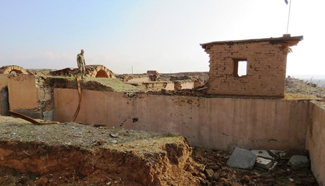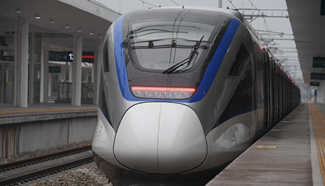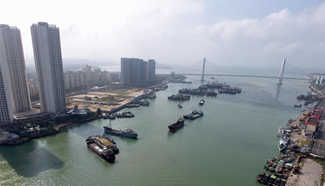5. Space launch sites
In June 2016 the Wenchang Launch Site held its first launch, marking a new-generation launch site designed and built by China. The site is environmentally friendly and made breakthroughs in innovation. Renovations have also been accomplished in the Jiuquan, Taiyuan and Xichang launch sites, forming a launch site network covering both coastal and inland areas, high and low altitudes, and various trajectories to satisfy the launch needs of manned spaceships, space laboratory core modules, deep space probes and all kinds of satellites.
6. Space Telemetry, Tracking and Command (TT&C)
The Tianlian-1 data relay satellite series have achieved global networking and operating. The Yuanwang-7, a spacecraft tracking ship has made its maiden voyage. Deep space TT&C stations have been built and put into use. China is constantly improving its space telemetry, tracking and command setups, and established a multi-functioning TT&C network featuring space, marine and ground integration with a proper scale. The flight control ability of spacecraft has been gradually improved, completing the TT&C missions of the Shenzhou spacecraft series, Tiangong-1 target spacecraft, Chang'e lunar probe series and earth orbit satellites.
7. Space applications
(1) Application of earth observation satellites. The ground system and applications of earth observation satellites are improving, the fields and levels in which these satellites are used are expanding and the application benefits are growing. The ground stations receiving data from land, ocean and meteorological observation satellites are operating based on comprehensive planning, a satellite data ground network with the capacity of receiving data from high- and low-orbit satellites and reasonable arrangement at home and abroad. China has also established, based on comprehensive planning, a ground data processing system for earth observation satellites, common application supporting platform, and multi-level network data distribution system, greatly increasing its ability in data processing, archiving, distribution, services provision and quantitative applications. Industrial application system building is in full swing, having completed 18 industrial and two regional application demonstration systems, and set up 26 provincial-level data and application centers. An integrated information service sharing platform for a high-resolution earth observation system has been built. Earth observation satellite data is now widely used in industrial, regional and public services for economic and social development.
(2) Application of communications and broadcasting satellites. The ground facilities such as TT&C station, gateway station, uplink station and calibration field of communications satellites have been improved. A satellite communications network and satellite radio and TV network of adequate scale to meet the needs of certain services have been built, further improving the communications service ability. These applications play an important role in radio and television services, distance education and telemedicine. The emergency satellite communications system has provided important support for the fight against flood and drought, for rescue and relief work, and for handling major emergencies.
(3) Application of navigation and positioning satellites. The Beidou Navigation Satellite System has significantly improved its accuracy and reliability, bringing into play an independent, controllable, complete and mature Beidou industrial chain and the three systems of Beidou industrial guarantee, application promotion and innovation. The Beidou Navigation System is widely used in transportation, maritime fisheries, hydrological monitoring, weather forecasting, surveying and mapping, forest fire prevention, time synchronization of communication, power dispatching, disaster reduction and relief and emergency rescue, influencing all aspects of people's life and production, and injecting new vitality into global economic and social development.
(4) Transformation and application of space technology. A new business model featuring the Internet plus satellite applications is coming into being, providing more convenient and high-quality services to the public. Secondary development, transformation and applications of space technology make possible the provision of high-quality products and services to relevant industries, and help to support and propel the development of new materials, intelligent manufacturing and electronic information, among others.
8. Space science
(1) Space science satellites. China has successfully launched the Dark Matter Particle Explorer, Shijian-10 and Quantum Science Experiment Satellite, offering important means for frontier scientific research.
(2) Space environment scientific experiments. China has carried out a series of space science experiments using space science satellites, Chang'e lunar probe, Shenzhou spacecraft series and Tiangong-1 target aircraft, deepening the understanding of the mechanism of biological growth and materials preparation under the conditions of space microgravity and intense radiation, and achieving some influential research findings.
(3) Space environment detection and forecast. China has identified the space environment's major parameters and effects using space science satellites and the Shenzhou spacecraft series to provide space environmental monitoring and forecasting services for the safe operation of spacecraft.
9. Space debris
China has improved the monitoring and mitigation of and early warning and protection against space debris. It has also enhanced standards and regulations in this regard. The monitoring of and early warning against space debris have been put into regular operation, ensuring the safe operation of spacecraft in orbit. China has also made breakthroughs in protection design technologies, applying them to the protection projects of spacecraft against space debris. In addition, all Long March carrier rockets have upper stage passivation, and discarded spacecraft are moved out of orbit to protect the space environment. (more)










